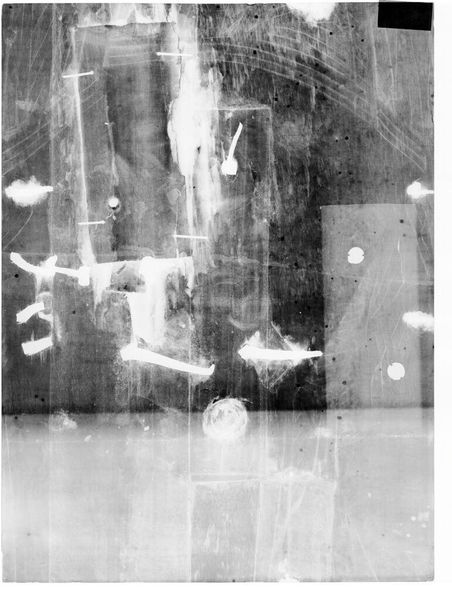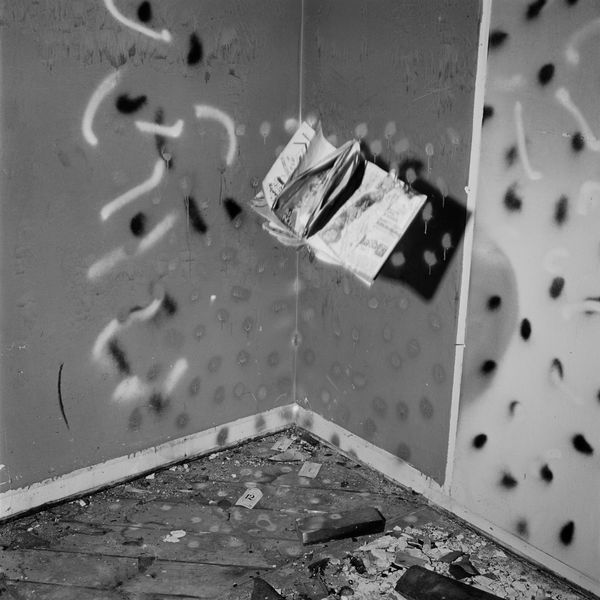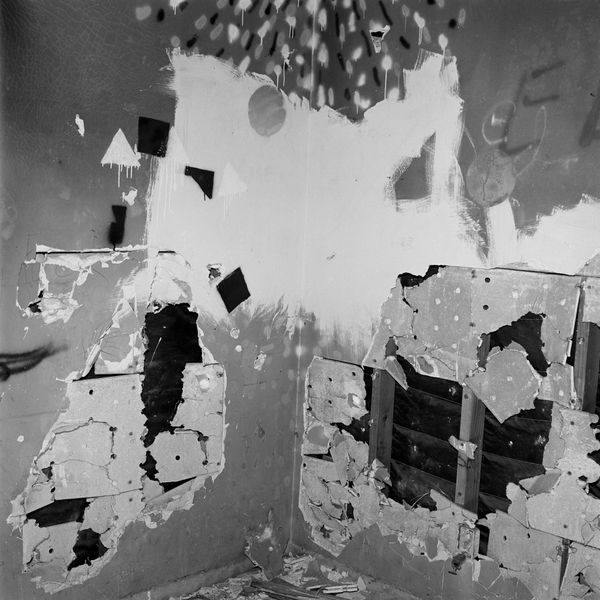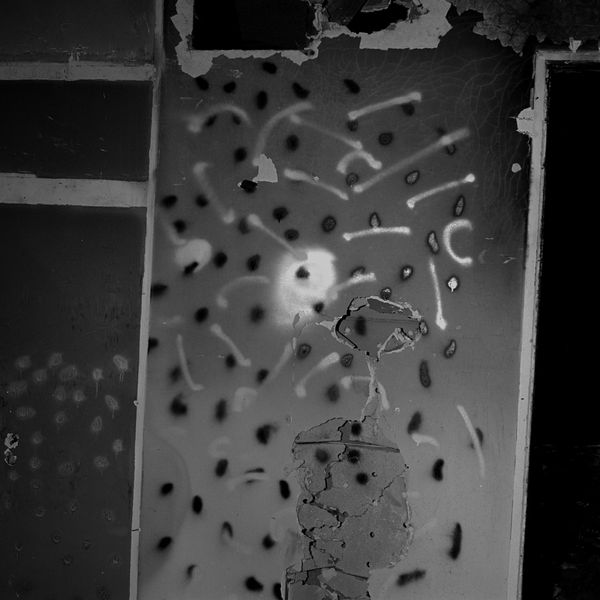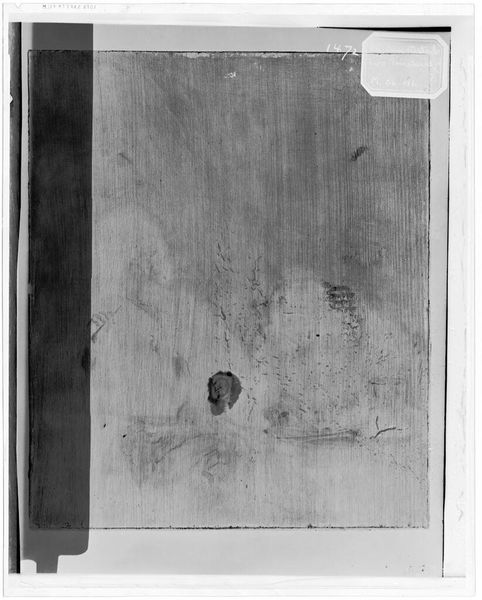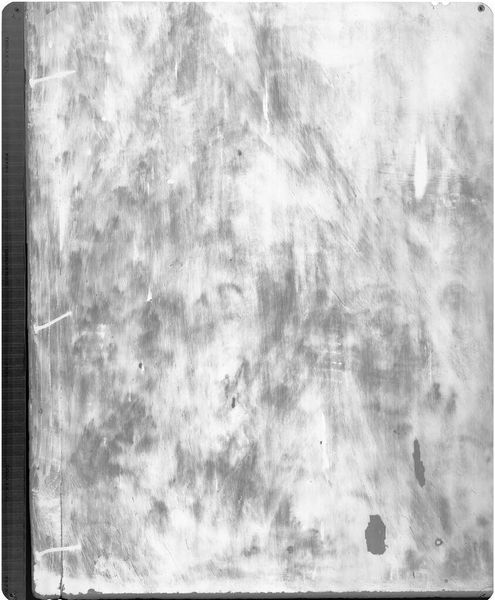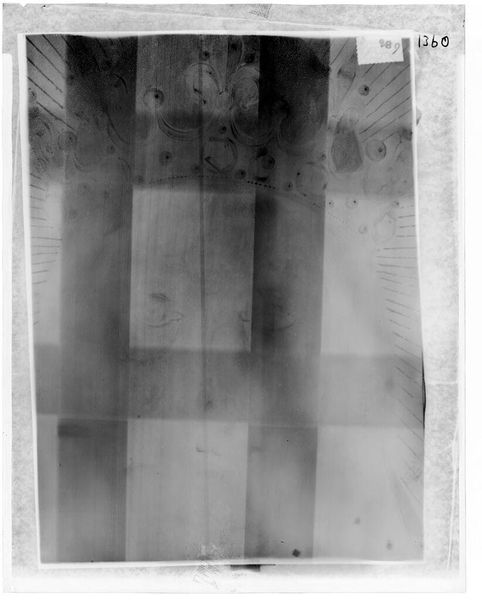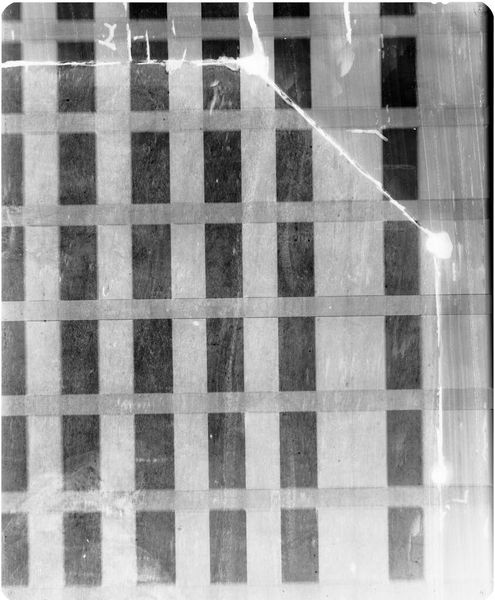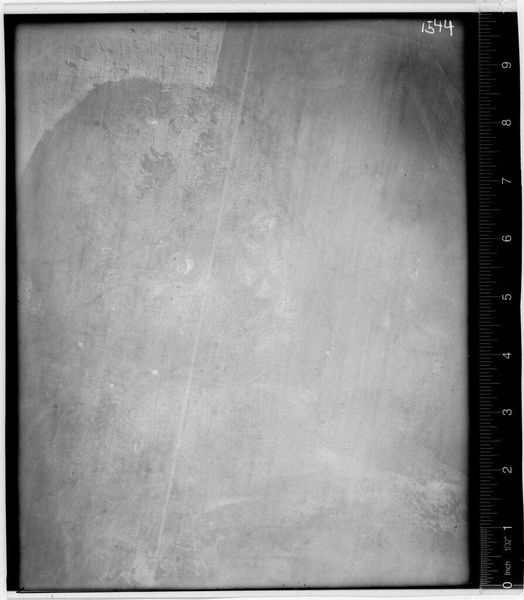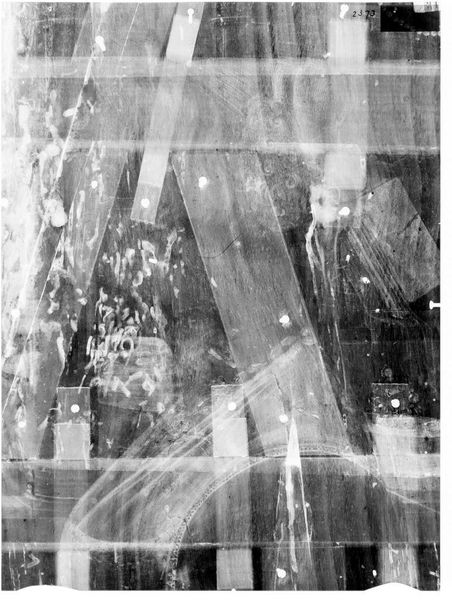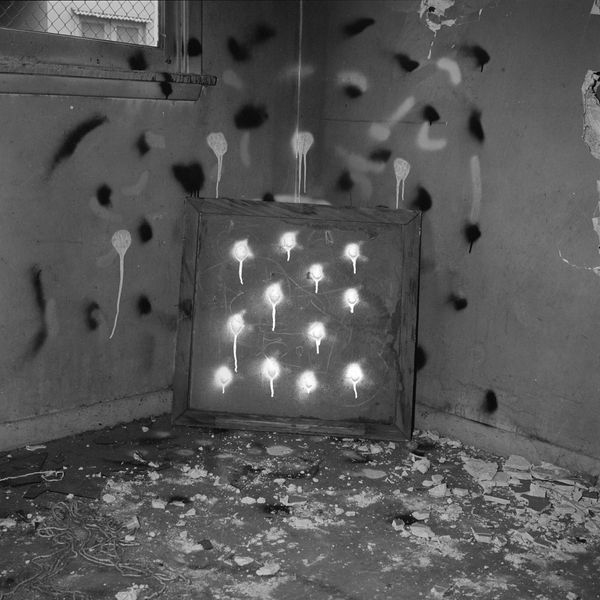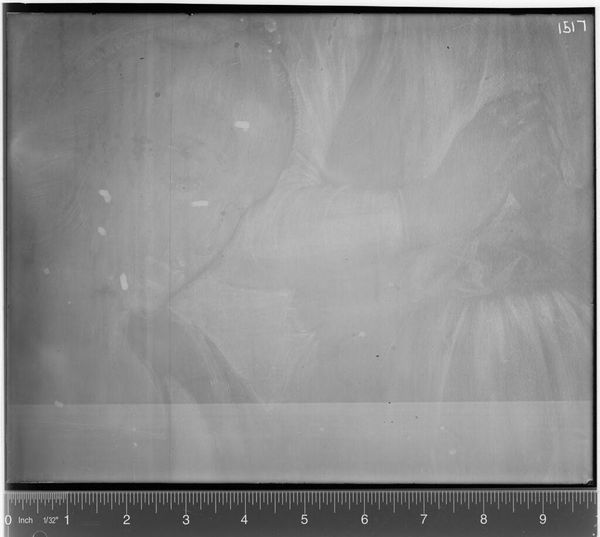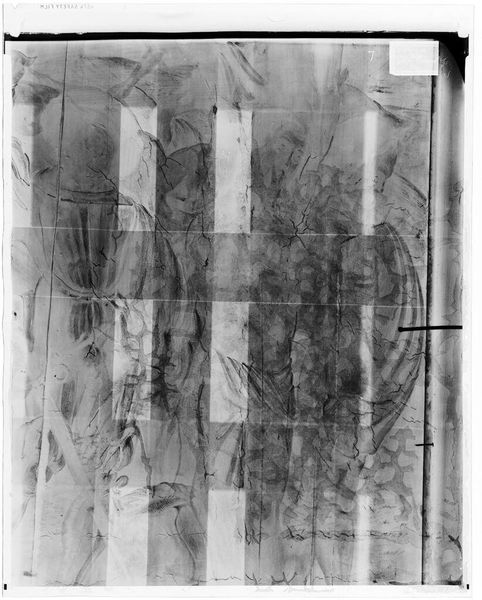
photography, gelatin-silver-print
#
conceptual-art
#
sculpture
#
photography
#
gelatin-silver-print
#
monochrome photography
#
monochrome
#
realism
#
monochrome
Dimensions: image: 34.93 × 34.93 cm (13 3/4 × 13 3/4 in.) mat: 62.23 × 59.69 cm (24 1/2 × 23 1/2 in.) framed: 64.14 × 61.6 × 3.81 cm (25 1/4 × 24 1/4 × 1 1/2 in.)
Copyright: National Gallery of Art: CC0 1.0
Curator: Standing before us is John Divola’s gelatin-silver print, "74V32," with a creation date possibly spanning from 1973 to 1993. It’s part of a broader series, aren't they often exploring ideas of the altered landscape? Editor: My immediate reaction is… violated space. There's an undeniable starkness. The high contrast, monochrome palette renders everything with brutal honesty; peeling paint, crude holes, the smudges that could be either damage or the beginning of something new. Curator: Interesting you say "violated." For me, the smudges and the overall composition feel like a conscious reclamation. Graffiti, after all, is about marking territory. Editor: Perhaps. But territory seized by desperation? Notice how the imposed "art" - or intervention, if we wish - still doesn't mask the disintegration. It layers another history atop decay. Does it empower or merely highlight the already-existing societal fractures mirrored here? Curator: I see your point. But look at the way the geometric lines interact with those biomorphic splatters; consider what is absent! Those voids shaped through an interaction with who and what that has left its marks. Perhaps "absence" is the very symbol itself. Editor: Are you speaking of the negative space that gives symbolic importance, much like in Rothko's Chapel? It's a risky comparison! This is hardly meditative; there's an anxiety radiating from the surface, even if there's a visual relationship across various "whited out" portions that imply the surface has served to document human encounter of some kind. This isn’t sublime transcendence we observe here. Curator: Agreed; transcendence might be too much! But a symbol can function precisely because of its ambiguity. It’s that ambiguity that prompts interpretation and reflection. The 'tag,' the scratch - each functions like a sigil with multilayered potential for meaning. Editor: I concede. And what better place for symbols of desperation than these forgotten thresholds? Thinking about what is on the other side. Still, the image lingers precisely because of the questions that we carry beyond this singular monochrome surface, into how our societies allow these spaces of destitution to fester. Curator: Beautifully put. Divola invites us to consider these markings – of absence and presence alike – inviting us to decipher and, in our interpretations, add our own layers of meaning. Editor: Absolutely. And isn't that the ultimate function of Activist thought: engaging these works towards imagining alternative futures—ones perhaps without such desolate ruins in the first place?
Comments
No comments
Be the first to comment and join the conversation on the ultimate creative platform.

